History/ES 247 Reading Guide
Tourism, The “Wilderness,” and Wilderness Preservation
- March O. McCubrey, “The Cultural Construction of the Maine Sporting Camps [1880-1914],” Maine History 34:2 (1994): 116-135. (e-reserve)
- Richard R. Wescott, “Early Conservation Programs and the Development of the Vacation Industry in Maine, 1865-1900,” Maine Historical Society Quarterly 27.1 (1987): 2-13. (e-reserve)
- Richard W. Judd, “Reshaping Maine’s Landscape: Rural Culture, Tourism, and Conservation, 1890-1929,” Journal of Forest History 32.4 (1988): 180-190. (e-reserve)
Further reading:
- Nathan S. Lowrey, “A Historical Perspective on the Northern Maine Guide,” Maine Historical Society Quarterly 26.1 (Summer 1986), 2-21.
- John W. Hakola, “Percival Baxter: The Wilderness Concept,” Maine Historical Society Quarterly 20:4 (1981): 227-256.
- Carolyn Merchant, ed., “Wilderness Preservation at the Turn of the Century” [essays by Roderick Nash, Alfred Runte, and J. Baird Callicott], reprinted in Major Problems in American Environmental History (1993), 394-412.
- Earliest Maine films: Five silent films (1901-1920): logging, trout fishing, lobster industry, potatoes, canoes and canoeing. 44 minutes.
Questions:
- How is this an environmental story? How is it an economic story? Is this a “success” story, and if so, then for whom?
- What visions of preservation and/or conservation did the various constituencies—rural residents, “sports” and the tourist industry, and corporate industrial interests—bring to the discussions of “public lands” and “natural resources”?
- In what ways was early conservation tied into the development of the tourist industry? What were the consequences of that interdependence? How did those ties exacerbate tensions between different constituencies? How did those ties support and benefit the environment, and at what costs? What role did scientific awareness play in this process?
- With these readings, at this point in the course, what have we come to understand about our own views of the wilderness, and about the “historical” as well as “environmental” antecedents of those views? How do we now understand the evolution of ideas of “resources”?
- What is the difference between preservation and conservation?
Postcards:
The Sports: Camping, Fishing, and Hunting
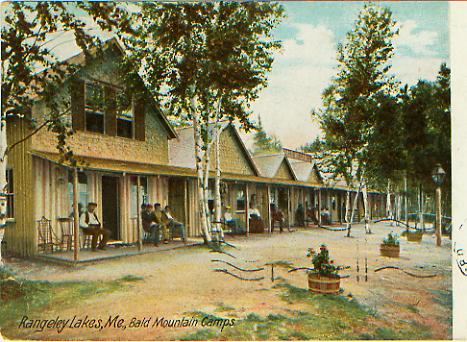
Rangeley Lakes, Me., Bald Mountain Camps. (c.1906)
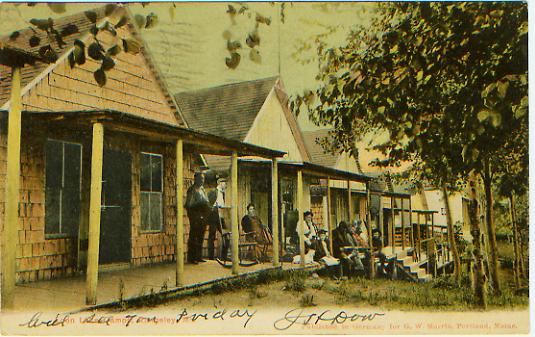
Loon Lake Camps. Rangeley, Me. (c.1906)
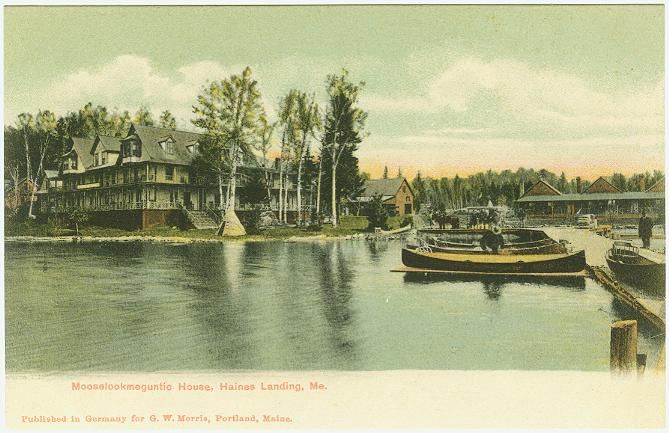
Mooselookmeguntic House, Haines Landing, Me. (c.1906). Note the Plains-style tipis in this postcard and the next.
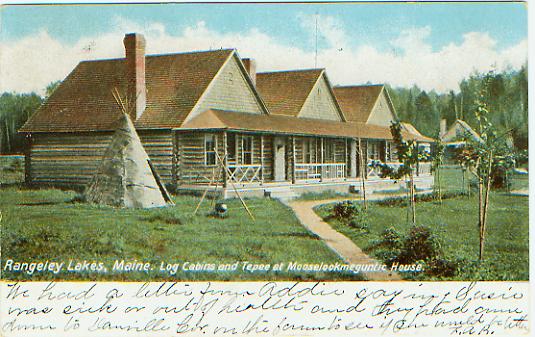
Rangeley Lakes, Maine. Log Cabins and Tepee at Mooselookmeguntic House. (c.1906)
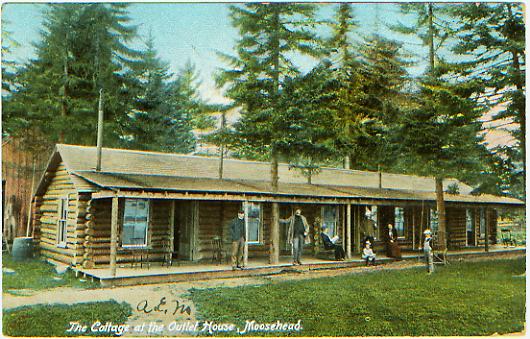
The Cottage at the Outlet House, Moosehead. (c.1906)
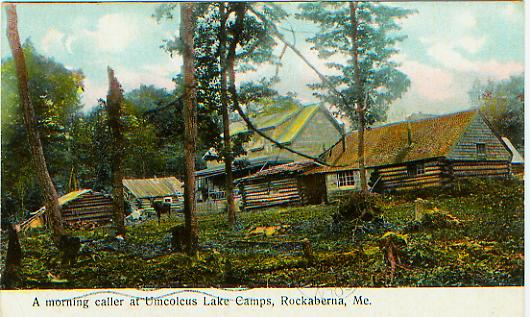
A morning caller at Umcolcus Lake Camps, Rockaberna, Me. (c.1907)
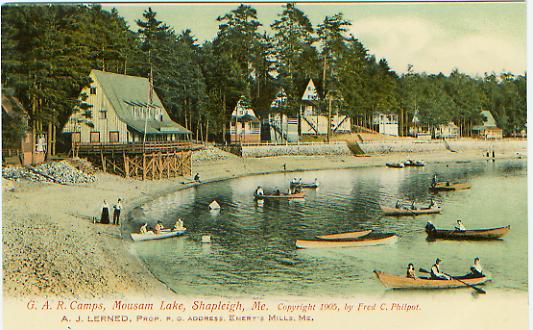
G.A.R. Camps, Mousam Lake, Shapleigh, Me. (c.1905)
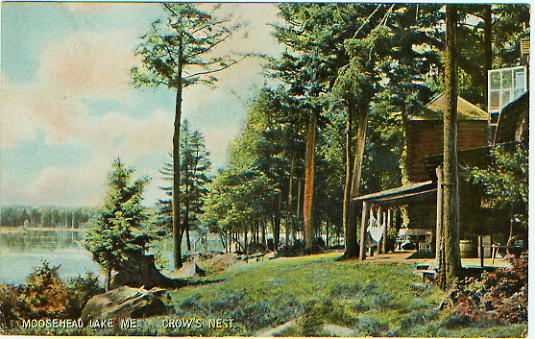
Moosehead Lake Me. Crow's Next. (c.1909)
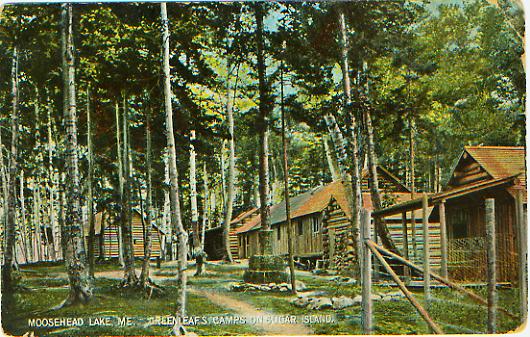
Moosehead Lake, Me. Greenleaf's Camps on Sugar Island. (c.1908)
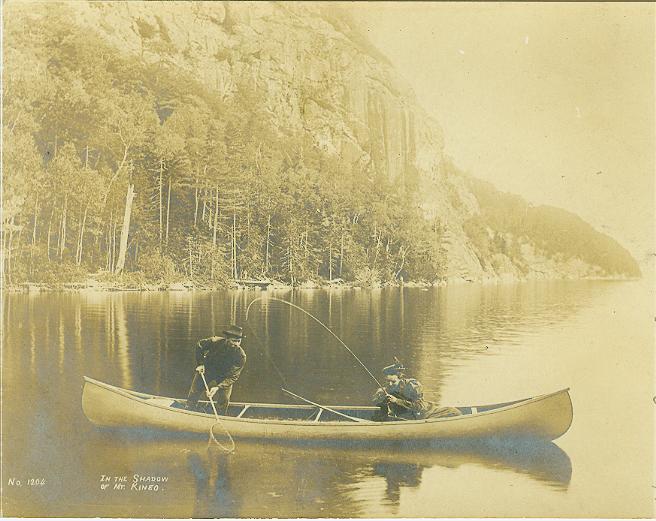
In the Shadow of Mt. Kineo. (c.1906; orig. photo by Edwin R. Starbird, c.1897)
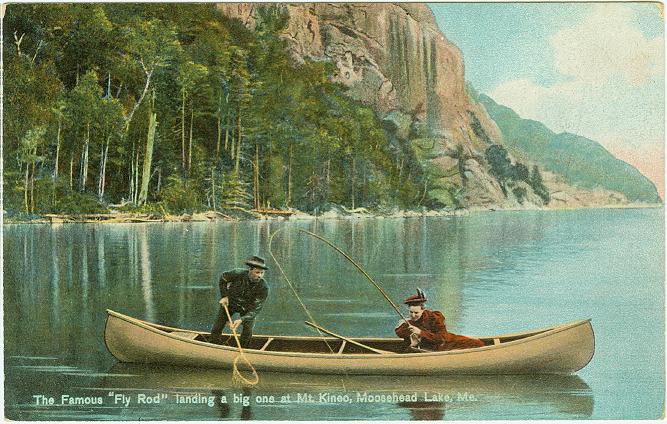
The Famous "Fly Rod" [Cornelia "Fly Rod" Crosby] landing a big one at Mt. Kineo, Moosehead Lake, Me. (c.1908; orig. photo by Edwin R. Starbird, c. 1897)
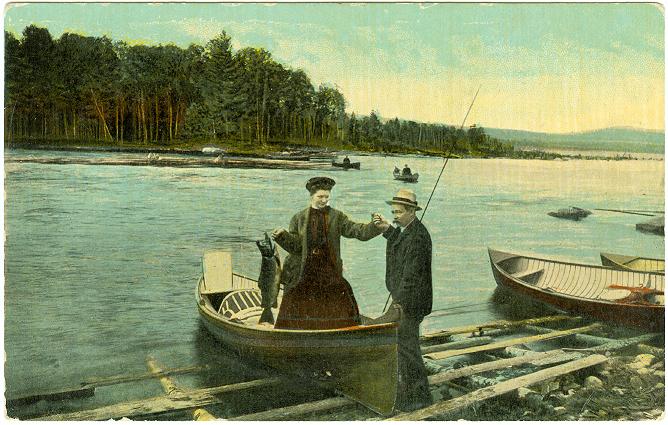
12 lb. Salmon caught by R.N. Parish at Upper Dam, Maine. (c.1910)
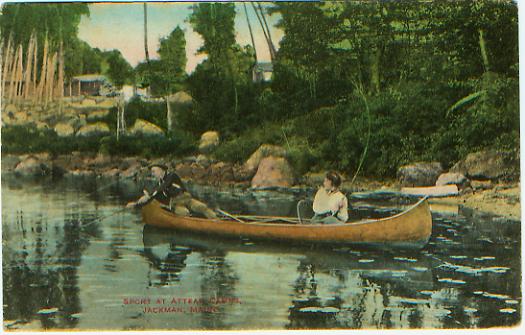
Sport at Attean Camps, Jackman, Me. (c.1907)
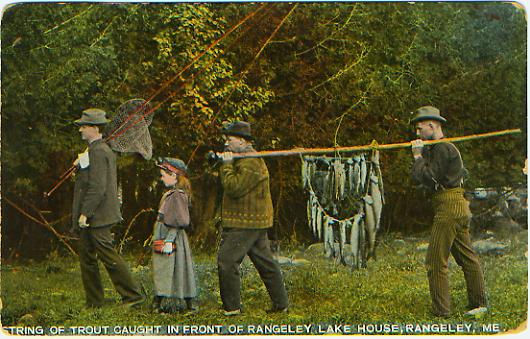
String of Trout Caught in Front of Rangeley Lake House, Rangeley, Me. (c.1909; from a Phillips Phonograph photo, 1896)
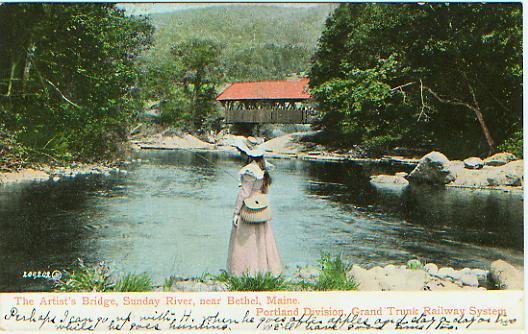
The Artist's Bridge, Sunday River, near Bethel, Maine. (c.1906)
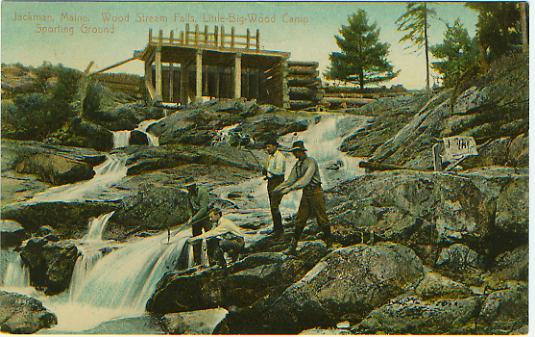
Jackman, Maine. Wood Stream Falls, Little-Big-Wood Camp Sporting Ground (c.1912)
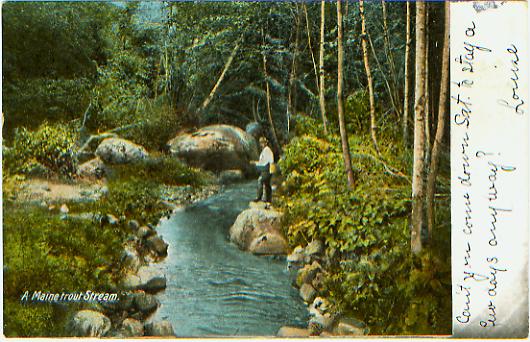
A Maine trout Stream. (c.1905)
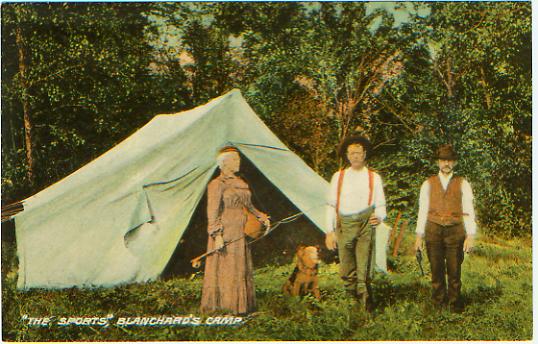
"The Sports," Blanchard's Camp (c.1908)
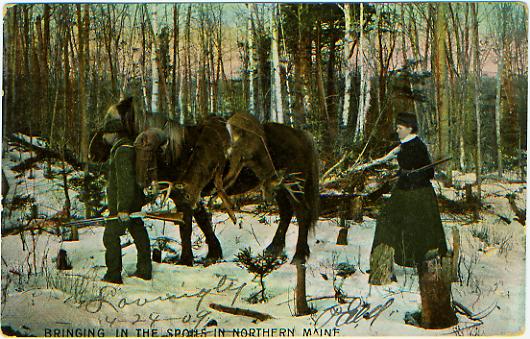
Bringing in the Spoils in Northern Maine (c.1909)
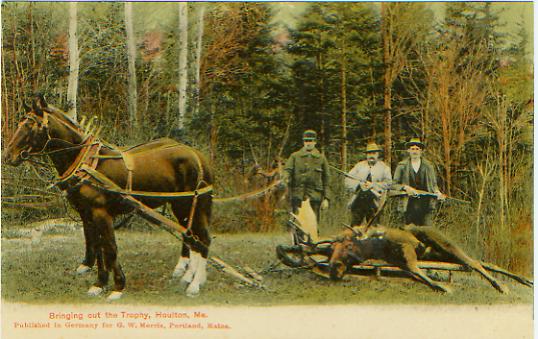
Bringing out the Trophy, Houlton, Me. (c.1905)
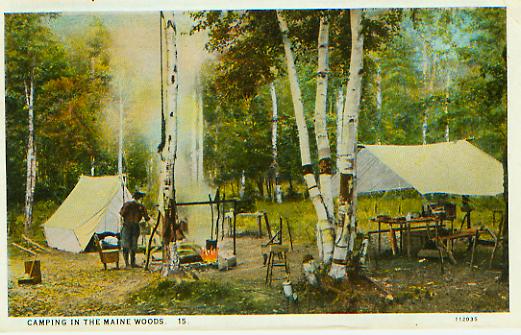
Camping in the Maine Woods (c.1930)
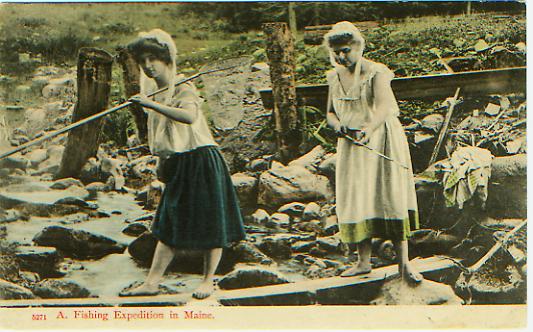
A Fishing Expedition in Maine. [also published as: Greetings from Haines Landing, Me. A Fishing Expedition in Maine] (c.1906)
